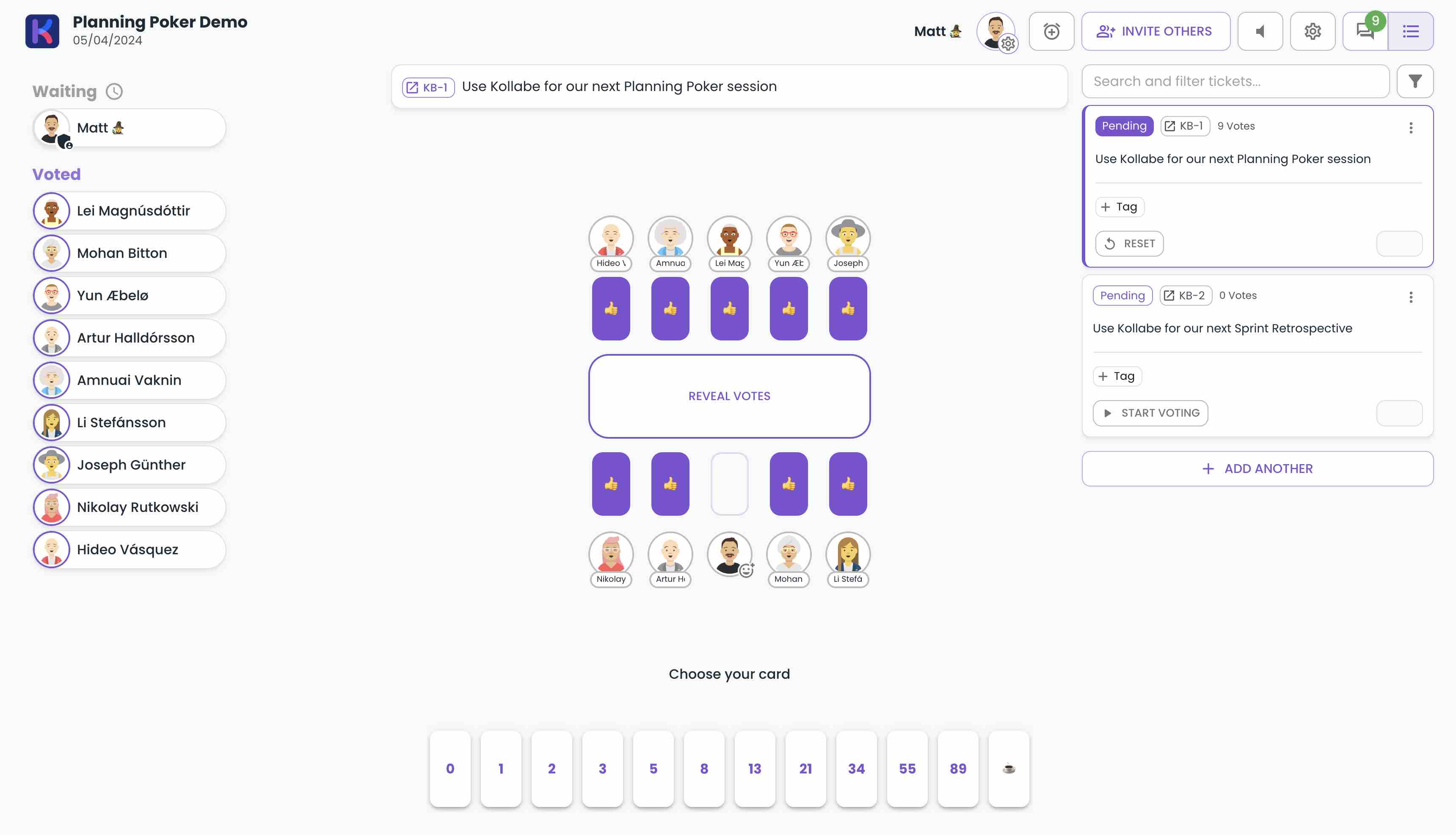Step-by-Step Guide to Running Successful Planning Poker Sessions
 Planning Poker Process
Planning Poker Process
In the dynamic world of Agile software development, effective task estimation is crucial for successful project management. One of the most powerful techniques in this regard is Planning Poker, also known as Scrum Poker or Estimation Poker. If you're new to this collaborative approach or looking to refine your team's Planning Poker sessions, this step-by-step guide is for you.
Gather the Essentials
To get started, you'll need a few key items:
- Poker Cards: These can be physical cards or a digital deck, each bearing a number that represents a point value for task complexity or effort. Ideal values include 0, 1, 2, 3, 5, 8, 13, 20, 40, and 100. Learn more about the various card sets in our detailed guide.
- Team Members: Invite all relevant stakeholders, including developers, designers, and product managers, to participate in the session. The diversity of perspectives will make a big difference in the discussions that happen after the initial estimates.
- Facilitator: Designate a team member to facilitate the process and keep the discussion on track. This role is crucial for ensuring a smooth and productive estimation session.
 Planning Poker Cards
Planning Poker Cards
Kick Off the Session
- Introduce the Process: Begin by explaining the purpose and mechanics of Planning Poker to ensure everyone is on the same page.
- Select the First Task: Choose a task or user story that the team needs to estimate and enter it for everyone to see.
Engage in the Estimation
- Silent Voting: Instruct each team member to select a card from the deck that they believe best represents the effort required for the task at hand.
- Reveal the Cards: Have everyone reveal their selected cards simultaneously, creating an engaging visual of the team's diverse perspectives.
Facilitate the Discussion
- Discuss the Estimates: Encourage team members to share their reasoning for the selected cards, fostering open dialogue and a deeper understanding of the task. We recommend starting with the lowest and highest estimates to understand the range of perspectives.
- Reach Consensus: Guide the team towards a collective agreement on the final estimate, taking into account the various viewpoints and concerns raised during the discussion. It might even be valuable to record the reasons for the final estimate to refer back to in the future.
 Planning Poker Votes
Planning Poker Votes
Record the Estimate
- Document the Result: Once the team has reached a consensus, record the final estimate for the task, ensuring it is clearly communicated and understood by all.
Repeat the Process
- Move to the Next Task: Proceed to the next task or user story and repeat the entire estimation process, leveraging the team's growing experience and rapport.
Embrace the Power of Collaboratio
By following this step-by-step approach, your Agile team will unlock the full potential of Planning Poker. This collaborative technique not only improves estimation accuracy but also fosters open communication, enhances team dynamics, and ultimately, leads to more successful project outcomes.
Remember, the key to mastering Planning Poker lies in embracing the process, encouraging active participation, and cultivating an environment of trust and transparency within your team.
To get started, explore Kollabe, a free online platform that simplifies the Planning Poker experience for Agile teams. With Kollabe, you can easily facilitate remote or in-person estimation sessions and unlock the benefits of this powerful Agile practice.

